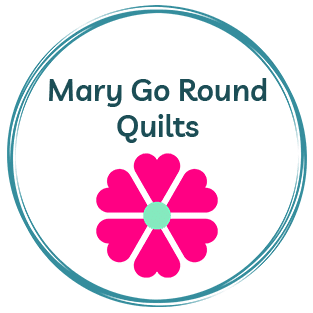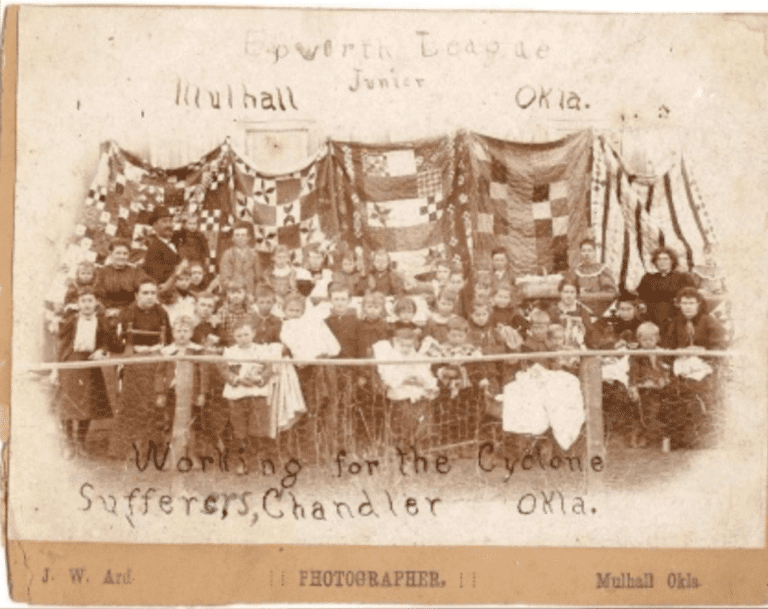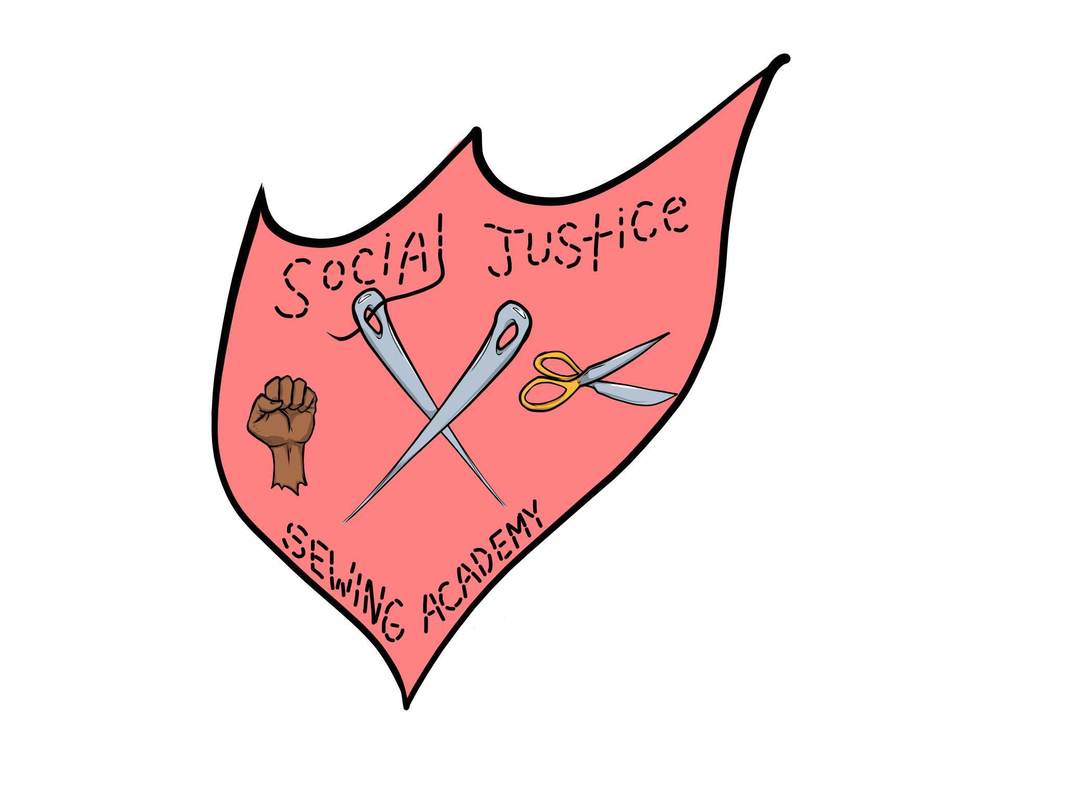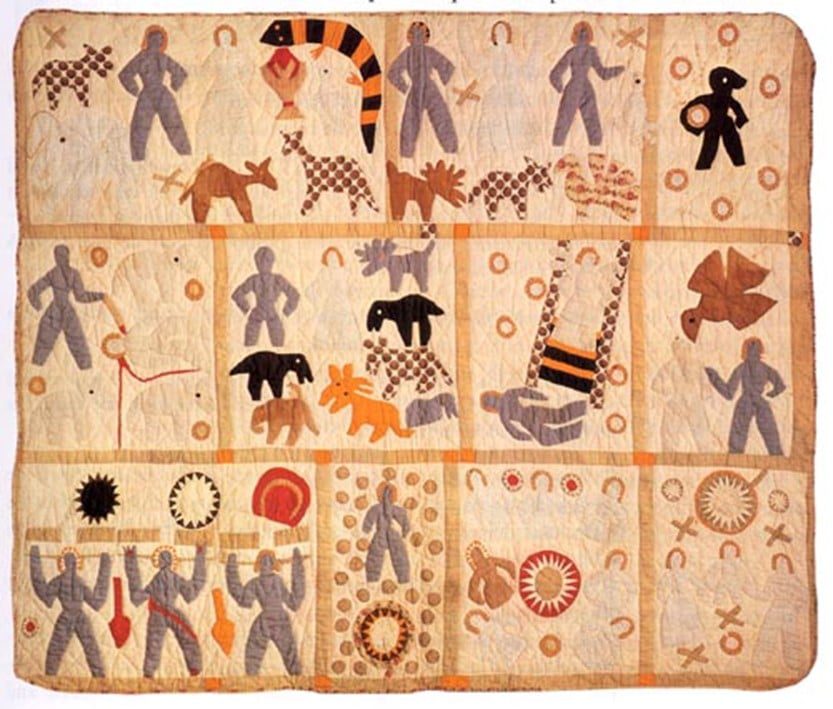This is a guest blog post presented by @Publiclibraryquilts
www.publiclibraryquilts.com
Chaos and quilts might not appear as a likely combination, but when it comes to communities going through hardship there is nothing quite so joyful as a quilt fundraiser!
While most of us probably make quilts on our own in the private space of our homes, historically quilting was a community activity where groups of mostly women would gather to produce useful heirlooms for their communities at quilting bees. This community-centric quilting lent itself to addressing local financial needs.
Way back in 1897 families in Oklahoma combatted the pain and destruction from a cyclone by making quilts. The Epworth junior league pictured here made quilts to sell for financial relief for families that had lost everything.

Sometimes, the very surface of a quilt is used to galvanize a fundraiser. Many quilts made to raise money for good causes in the late 19th century and early 20th centuries sold the honour of being featured in the quilt. Donate to charity and your name or business could appear embroidered on the quilt. Examples include this red cross children’s quilt (Seen here: https://www.internationalquiltmuseum.org/about/quilt-month/red-cross-quilt )
In 1917, Edith Wing’s Sunday school class of 9-year olds made the quilt to raise money for the red cross. They collected signatures in Nebraska and embroidered the donors’ names on their quilt.
Another wonderful example of this tradition is a quilt from Kansas. But it’s not just a fundraiser quilt. It’s also a little sneaky. In 1888, the women of a Methodist episcopal church decided to raise money for their community. It’s not entirely clear what the funds were raised for but it seems they did community work through the church and were strongly inclined towards women’s rights agitation.
The women charged local businesses to be included in the quilt (and for their portion of food at the town party when the quilt was displayed!) For 3 dollars you too could be featured in red stitches on a block promoting your small business.Evidently not all the blocks were filled. Cheekily, the women added in squares aligning with their political beliefs including one about “equality before the law” and “mother Eve.” The block was filled with strong and opinionated women from history who inspired them.
The quilt was also filled with what they felt was valuable about their community: the oldest school, the current primary school teacher, names of church leaders, and comments on the importance of the railroad. A map of how their world hung together. You can see images of the quilt in an online exhibition from the International Quilt Museum here: https://www.internationalquiltmuseum.org/exhibition/partisan-pieces
The women seem to have struck a good balance with their community engagement and politics because local newspapers all applauded their work writing “Be not mistaken. It is not a crazy quilt, but is perfectly sane in every way, new and novel, and it advertises almost the entire business of Fort Scott, besides having nearly one thousand names worked upon it.” And “The especial feature of the evening and the one that attracted most attention was the quilt made by the ladies which nets them $112, besides they have a standing offer of $20 for the quilt.”
While one newspaper admitted “The quilt is an odd one,” the writer of the article also remarked “A number of squares were not paid for, the space being devoted to the public benefit.”
Moving into the mid 20th century, quilting became a viable way to raise money for the civil rights movement and for Black families suffering oppressive economic conditions in America.
The most famous and well documented of these efforts is known as The Freedom Quilting Bee and was established in 1965. The collective was based in Alberta, Alabama and included some of the women who also made quilts in Gee’s Bend (an amazing quilting community documented in this short, freely available film: https://www.nytimes.com/video/opinion/100000006143052/while-i-yet-live.html )

The Freedom Quilting Bee included about 150 Black women lead by Callie Young and Estelle Witherspoon. They had help from local Episcopal priest Reverand Francis X. Walter who wrote in an application for funding: “Many quilters and their families have been active in Civil Rights Movements. For some this has meant eviction from house and land, foreclosure of loans and the end of credit. These burdens along with the automation of cotton farming have resulted in the formation of a number of co-op experiments as a means of subsistence.” Funds the group received went towards building the Martin Luther King, Jr. Memorial Sewing Center.
You can see pictures and read more about the Freedom Quilting Bee from the New York Public Library: https://www.nypl.org/blog/2011/10/11/freedom-quilting-bee-cooperative
The best part of the Freedom Quilting Bee is that it still exists! Have a look at the group’s current work here: http://www.ruraldevelopment.org/FQB.html & a more recent website with information about quilters from the area is found here: https://www.soulsgrowndeep.org/gees-bend-quiltmakers Souls Grow Deep Foundation supports Black artists in the American South.

Today, the tradition of quilt fundraisers is also alive and well. Even in pandemic isolation, quilters have found ways to virtually gather to raise money and awareness for Black Lives Matter causes. One such effort was recently named the Abolition Quilting Bee.
Participants were asked to mail in a quilt block while also engaging with Black writers addressing police violence. The discussions and learning that we can imagine occurred in communities historically gathering to quilt and fundraise at quilting bees was replicated online. In 2020, the three resulting quilts made by 150 quilters were raffled off to raise money for Assata’s Daughters, https://www.assatasdaughters.org/ The quilters raised $12,000!
You can learn from the project’s readings and more about how the quilter’s ran their quilt fundraiser here: https://gracerother.com/abolition-quilting-bee
Even in the busy modern world and the difficult pandemic, quilting bees continue to care for communities.
If you like these histories of quilting follow @PublicLibraryQuilts on Instagram for more good stories.
www.publiclibraryquilts.com




